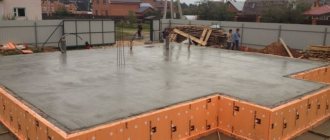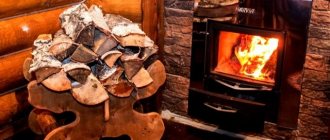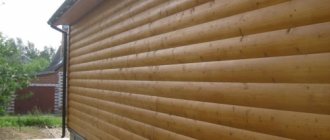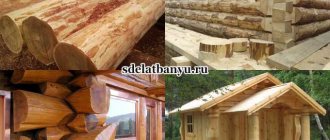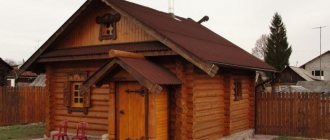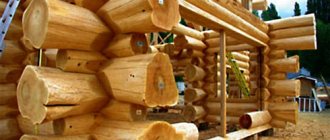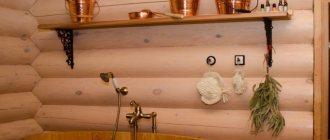In regions with a harsh climate and frosty winters, there is a need to equip residential buildings, agricultural and industrial buildings, and social facilities with heat supply systems, the key element of which is the heating boiler. The most important criterion for choosing heating equipment is the cost of energy resources on the regional market and, as a consequence, the total cost of heating.
There is no worthy and less expensive alternative to solid fuel (liquefied gas, electricity, fuel oil are much more expensive, and solar systems can be used exclusively as auxiliary). Therefore, a logical question arises: “Which solid fuel boiler to choose for the heating system.” We will try to answer objectively and as completely as possible.
Wood burning boilers Protherm Beaver DLO
Perhaps the most important parameter that you should pay attention to when purchasing a solid fuel boiler is the type of fuel on which it runs.
Main options:
- firewood and various waste from the wood processing industry (bark, wood chips, sawdust, wood briquettes);
- coal (brown, varieties of stone, in particular, coke and anthracite, also keep in mind that this type of fuel differs in fractions, this is very important);
- agricultural waste (for example, grain, oats, straw, sunflower husks, etc.);
- peat;
- granules (pellets that are made by pressing from woodworking and agricultural waste; a pellet boiler operates on this type of fuel).
Before purchasing heating equipment, look at how much each of the above-mentioned types of solid fuel costs in your region and which is cheaper. And in order not to limit yourself in your choice, you should take into account that there are universal, combined solid fuel boilers that operate on several types of fuel.
The second important parameter is the operating principle of the heating device. The battery life of the boiler depends on this. There are only three options:
- manual loading of the fuel chamber and regulation of the combustion process (using a chain);
- manual loading of the fuel chamber and automatic regulation of the combustion process;
- automatic loading and regulation of the combustion process.
Option one - classic boilers
The first option is traditional, classic, which has been used for thousands of years in conventional stoves, put in firewood or coal, and adjusted the air supply with a damper. The main disadvantages are the need for constant supervision and low efficiency, the inability to accurately regulate the combustion process. Advantages - the simplest boiler in technical terms and maintenance, operating on almost any type of solid fuel.
Examples of classic boilers:
- ZOTA Carbon
with a steel heat exchanger, operating on coal with a fraction of
10.00 - 50.00 mm
, power
from 15.00 to 60.00 kW
, with top fuel loading, a movable grate and a design that ensures maximum afterburning of fuel and precise oxygen supply to firebox; - Buderus Logano
with a steel heat exchanger, can work either separately or in combination with a gas or liquid fuel boiler with a capacity of
12, 16, 20, 24, 27, 32, 45 kW
, in systems with natural and forced circulation of coolant, is small in size and heat exchanger protection, large volume of ash pan and loading chamber, works on wood (logs up to 33.00 and 53.00 cm long), coal, coke.
The burning time of such boilers is 3-7 hours.
Connection to heating mains
Connecting not only bathhouses, but also private houses to centralized heating mains is very problematic. This is due to the hydraulic structure of the central heating system. Connecting an insignificant low-power facility, without the possibility of constant access for repair and maintenance, can negatively affect the operation of the entire centralized system as a whole.
As a rule, heat supply organizations do not accept applications and do not issue technical conditions for such events.
Option two - semi-automatic boilers
A boiler that requires manual loading, but controls combustion using automation, is called semi-automatic, which ensures higher equipment efficiency; it operates on any fuel, like classic boilers. But these boilers are energy dependent.
Let us note the models of the Polish manufacturer Metal-Fach
SDG
line , boilers run on coal and wood, heat exchanger made of
P265GH
6.00 mm
thick , water-type cooling grate, with a vertical chimney system, large loading chamber and
efficiency
up to
81%
, designed for open and closed heating systems with forced and natural circulation of coolant.
Our range
In the table below we will dwell in detail on the three most popular models of powerful double-circuit boilers.
| Furnace name | Photo | Characteristics |
| Cooper OVK 10 with gas burner AGG-13K |
| |
| Cooper OVK 18 with gas burner AGG-26K |
| |
| Cupper PRO 36 with gas burner AGG-40K |
|
Our managers will always help you take into account all the important features when arranging a common heating system for two buildings and choosing a suitable boiler.
The third option is automatic boilers
Fuel loading into the chamber and combustion control are carried out automatically. The advantage is autonomy (5-9 days on one load), the disadvantage is the high cost.
Such boilers are equipped with a loading hopper for supplying solid fuel and automation. The operating principle is quite simple. Fuel of a certain fraction is loaded into a bunker, from which it is supplied to the loading chamber as it burns.
Let us note the automatic boilers of the Polish manufacturer Metal-Fach
with a steel heat exchanger (P265GH steel with a thickness of up to 6.00 mm is used),
efficiency
over 90
%
, a modern, innovative type controller
FL 310LGRTC
, which allows servicing one mixer and up to four circulation pumps with continuous logic and PID control functions, an upper combustion chamber, retort burner of the following lines:
- SEG (work on coal of various fractions)/SEG BIO (pellets, oats, grape and olive seeds, other agricultural solid waste and coal are used as fuel). These are devices with automatic fuel supply, the ability to connect room (internal) and weather (external) sensors, a lambda probe and the STRAŻAK (FIREMAN) protective system, which prevents the ignition of granules;
- SD DUO
, coal is used as solid fuel, including sunflower seeds, coal dust, and any hardwood (in manual mode). The boilers are equipped with a fuel dispenser, two loading chambers, an automatic device responsible for supplying fuel; if necessary, a lambda probe can be connected; - SD DUO BIO
, configured for burning pellets, agricultural waste, grain crops (wheat, oats), as well as coal, hardwood and coal. The devices are equipped with an automatic tray loading device with a feed screw, an ignition device, a lambda probe (if necessary), and the STRAŻAK (FIREMAN) protection system, which prevents fuel from igniting outside the firebox. - SMART
and
SMART EKO
, running on pea fraction coal, pellets, with a unique Ekoenergia burner. These boilers can operate in both manual and automatic modes, which guarantees stability in the heat supply to the premises. The MASTER 500 controller allows you to control two pumps and a room thermostat.
Separately, we note the automatic boilers of the Russian company Vulkan
, developed on the basis of proven European manufacturers of heating equipment.
They are unpretentious in operation and fully adapted to Russian operating conditions. They work on coal of various fractions ( up to 40.00 mm
), including pellets, pellets (fraction
from 6.00 to 8.00 mm
), heat exchangers are made of boiler steel 6-8 mm thick, have a screw supply of solid fuel from a bunker.
These automatic coal boilers are capable of operating autonomously from five to ten days, and are equipped with electronics from various European manufacturers, which allows you to control two circuits of the heating system and the hot water supply system (DHW) simultaneously.
Anyone can understand the controls thanks to a simple and intuitive menu (interface). Additionally, a GSM module
for remote monitoring and control using mobile communications, an automatic ash removal system and automatic ignition.
, Vulkan automatic boilers
one of the best offers on the Russian market.
Heating mains for heating a private house
In private homes, the heat resource is often located outside the home. To ensure a highly efficient heating system, it is necessary to deliver the coolant into the room, then heat loss will be minimal. Regardless of the place where the heating main is laid - on the ground or under the soil, you need to take care of choosing a pipeline from the optimal material. You will also need to provide high-quality thermal insulation.
Heating Water LLC offers modern flexible flexible of various markings. Our company is a direct dealer of pipelines from the manufacturer Termaflex. From us you can not only buy Flexalen, but also order fast and high-quality installation. Our specialists carry out above-ground and underground installation of heating mains in almost any territory.
What material are boiler heat exchangers made of?
Once you have decided on the type of fuel and type of boiler, you need to pay attention to the design features and operational characteristics.
An important parameter is the type of material from which the heat exchanger is made. There are only two basic and widespread options :
- cast iron;
- steel.
Cast iron heat exchangers are more durable, their useful life is more than twenty years, and they are resistant to corrosion. But this material is quite sensitive to mechanical stress and temperature changes, which can lead to deformation of the structure. Cast iron boilers consist of modules and sections, which facilitates transportation and installation.
This is an excellent solution for solid fuel wood boilers. But this is not a very good solution for automatic solid fuel boilers, since these boilers operate in start-stop mode, which leads to frequent temperature changes, and this adversely affects cast iron. In addition, a cast iron heat exchanger requires frequent cleaning, and it is not very convenient to clean, unlike a steel one.
Steel heat exchangers are more resistant to temperature changes and mechanical damage, but their useful life is slightly shorter.
This solution is perfect for appliances operating on hard and brown coal. Steel boilers are welded from fragments of sheet steel; this is a non-demountable structure.
Much less common materials for heat exchangers are copper, ceramic-coated steel, or combined solutions.
Laying pipelines from the house to the bathhouse
Pipeline from the house to the bathhouse
Laying heating lines to the bathhouse is carried out in two ways:
- External (open);
- Underground (hidden).
External laying is used when the distance to the bathhouse is small - in this case, the construction of numerous supports, which are unnecessary elements on the site, is not required. When laying externally, pipelines are insulated and laid with a slope to free them from water.
The main method of laying heating pipelines is underground. The choice of material is carried out subject to special operating conditions - inaccessibility and absence of connections (hidden). The best choice is polymer pipelines. Pipes made of polyethylene (cross-linked), metal-plastic, polypropylene are laid on a sand cushion in an open trench, then buried.
The depth of the trench—the point where the pipes will be laid—must be below the freezing point of the soil for a particular region. The freezing depth is determined from the reference book. Pipelines do not need to be insulated by using protective material - fiberglass and other types of material with similar characteristics.
Combustion technology
The next stage of selection is very important. You need to decide on the boiler operation scheme. All solid fuel boilers according to fuel combustion technology can be divided into three large groups:
- the first one uses the classical principle of burning coal and wood, which is that combustion occurs from the bottom up, that is, first the lower layer burns, and then the upper one, this is a classical scheme, such heating equipment is the cheapest;
- the second, more advanced, is the combustion of fuel from top to bottom, combustion occurs like a regular paraffin candle, which allows for the longest burning on one tab, this is the so-called long-burning solid fuel boiler, the most common design is called Stropuva;
- the third, the most complex and expensive technology, is to use two chambers, the first loading chamber, solid fuel is supplied into it, where it smolders due to the low oxygen content, which prevents combustion, as a result, pyrolysis gas is released, fed into the second chamber, where it is produced its afterburning is the optimal scheme; such boilers are usually called gas generator or pyrolysis boilers, but they are more expensive and the requirements for fuel quality are high.
Do it yourself or trust the professionals
A wide range of insulating materials, as well as the ease of installation of some of them, encourages people to independently carry out work on insulating pipelines. Doing it yourself is definitely cheaper. But apparent simplicity is not a reason to refuse the services of professionals. The advantages of hiring specialists are obvious:
- correct calculation of heat loss
- assistance in the selection of materials
- professional tool
- quality assurance
The experience of specialists allows you to avoid mistakes when arranging thermal insulation. Self-respecting companies work exclusively with materials from trusted manufacturers. When choosing insulation materials on your own, preference is generally given to cheaper brands, which is fraught with problems during operation. By turning to professionals, you receive a guarantee of high-quality work performed with the elimination of shortcomings in the future (if any are discovered).
Functional purpose
After you have decided on the technical and structural features of the boiler, you need to answer the question: “What is the boiler for?” . Naturally, the first answer will be: “For heating.” And that's true. Such heating devices are called single-circuit.
But the functionality of the equipment can be significantly expanded; for this, a second circuit and storage tanks for hot water are used. Such boilers are called double-circuit and are used simultaneously in heating and hot water supply systems, that is, two in one, they are more expensive, but the functionality is higher and these are very compact solutions. There is no need for additional purchase and installation of water heating equipment.
Factors affecting heating pipes in the ground
A heating pipe buried in the ground is subject to the same influences as an external pipeline, plus factors caused by burial:
- internal pressure of the coolant, causing circumferential and longitudinal tensile stresses in the pipe section;
- coolant temperature is a factor, in addition to thermal effects, also causing pipeline stress;
- soil temperature - in winter, taking this factor into account is especially important;
- soil deformations - the pipe is affected by any of its displacements (settlement, shear, etc.);
- pre-bending stress of the pipeline - the trench profile often follows the terrain;
- vertical load - the effect of the weight of the trench backfill layer;
- the resistive action of the soil on the walls and bottom of the pipeline - counteracting the vertical load;
- vibration loads - from passing vehicles, excavation work in the neighborhood, etc.;
- moisture – precipitation and groundwater;
- exposure to chemicals - compounds in the soil and coolant;
- biological factor - bacteria, decomposition.
Thus, laying a pipeline in the ground should be done taking into account all of the above factors and solving the question of how to insulate heating pipes in the ground.
Choice
What are the characteristics of gas stoves intended for baths?
Stones
The traditional stove for a Russian bath - a heater - is distinguished by a large number of round stones placed in a tray. The tray is located above the firebox and, after lighting the stove, heats up quite quickly; the stones heat up to temperatures of 200 degrees or more.
They perform a dual function:
- By accumulating heat, the stones maintain a high temperature in the steam room after the wood burns out.
- The very name “steam room” implies the presence of steam. The traditional mode for a Russian bath is 60 degrees with very high humidity. To add steam, just splash water from a ladle onto the stones.
Gas heater Ermak.
If you are a fan of the Russian bathhouse, a heater is your obvious choice. If you want to use a sauna with high temperatures and minimal humidity, you don't need stones. Heat accumulation in the case of gas, you understand, is of no value.
Water tank location
It may be located in the stove body or around the chimney. In the first case, the heat source for heating water is the burner flame, in the second - combustion products. In the author’s humble opinion, the second option is preferable: the tank additionally cools the combustion products, increasing the efficiency of the device.
Gas stoves
If you use bottled gas, a stove that combines two types of fuel would be an excellent solution for you. When the cylinder runs out, you can light the stove with wood.
Burner
Often it is purchased separately.
What should you pay attention to when purchasing?
- With a steam room volume of 18 m3, the reasonable maximum gas consumption by the burner is 1.5 m3 per hour. It is easy to recalculate the required productivity for your volume.
- The registration certificate and markings must be present. Automatic shutdown when the flame goes out is mandatory (in fact, now it is available almost everywhere).
- Any damage, even seemingly uncritical, puts an end to the device. Big and fat. We are talking about people's lives and health.
Domestic burner Teplofor.
Let's sum it up
As it turns out, heating a sauna with electricity is an excellent solution for those who use a steam room all year round.
It has a number of advantages:
- Environmental friendliness. Burning wood releases huge amounts of carbon dioxide into the atmosphere. If ventilation is poor, visitors to the steam room may also inhale carbon monoxide. In the case of electricity, such a problem cannot arise.
- Practicality. Optimal temperature conditions are maintained throughout the year, and control lies entirely in the hands of the owner. An autonomous heating system will prevent the appearance of fungus and protect the room from freezing.
- Easy to install. To build an ordinary stove, you will have to find an experienced stove maker, and only professionals are allowed to install a gas boiler. Electric heating is much easier to install, so the help of a specialist is not required.
The advantages are obvious, but there are also several disadvantages. Firstly, during power outages, heating will not be provided, and secondly, electricity tariffs are quite high.
Advantages and disadvantages of bathhouse gasification
Before deciding to supply gas to the bathhouse, owners of suburban areas try to take into account all the features of this method. The cost of operation, environmental friendliness, difficulty of maintenance, and efficiency are taken into account.
Advantages of using blue fuel
In addition to noticeable savings, the advantages of this method include the hygiene of the gas - there are no odors, soot, or soot during combustion. In addition, a gasified sauna heats up almost twice as fast.
Firewood is inferior to gas in many respects: it needs to be stored somewhere, monitored for timely delivery and condition. However, they are still the most popular firebox material. And even used in combined gas-wood stoves
A big plus is the automation of the process. Kindling requires minimal labor on the part of the owner. Combined with the cheapness of gas, this advantage makes gasification of a bathhouse especially attractive.
Disadvantages noticed by owners and professionals
According to the owners, the main drawback is the difficulty in obtaining permission: if there is the slightest inaccuracy, the commission prohibits the use of gas to heat the bath.
Professional gas workers note a high level of danger due to non-compliance with installation rules, lack of safety devices and vigilance of owners
Other disadvantages include:
- the need to pay for the work of installation specialists;
- high cost of equipment;
- restrictions on the choice of sauna design.
Another subjective observation concerns the lack of odor. Many people appreciate the aroma that spreads throughout a heated room when wood burns. Gas equipment eliminates this possibility.
How the specialists of our company lay pipes for a private house
The laying of a heating main in a private house is carried out in stages. First you need to buy pipes for a private house . Before laying the pipeline in the soil, it is necessary to make preparations that determine the main characteristics of the future heating main. The installation is carried out as follows:
- The system is being designed. First, the building is inspected to determine heat losses. Then the heat distribution from the heaters is calculated. This is necessary for the correct placement of heating devices.
- The equipment configuration is selected.
- The optimal circumference of communication networks and coolant temperature are determined.
- The places where the distribution units are secured are located.
- The project is documented and certified, and an estimate is calculated.
These and other works will be performed by employees of Heating Water LLC . If you need to buy flexible or order the laying of a heating main , you can find out in more detail about the prices and stages of the upcoming work by calling 8 (495) 211-17-01 . Contact us. We are always at your service!
Source of the article: https://teplotekcorp.ru/truby/teplotrassa-svoimi-rukami.html
Warm floor system
This option for heating a bathhouse is one of the modern methods, which has been used frequently in recent years. It is quite difficult to install special equipment without the appropriate experience.
It is much easier to install an electric floor system and you can do this work yourself:
- First of all, a waterproofing material is laid, on which a layer of mortar is placed.
- Next comes the installation of thermal insulation.
- An electrical cable is mounted on top of the thermal protection layer and the screed is refilled.
The technology for creating a floor with water heating is similar, but in this case they do not use a cable, but rather lay pipes to circulate the hot coolant.


